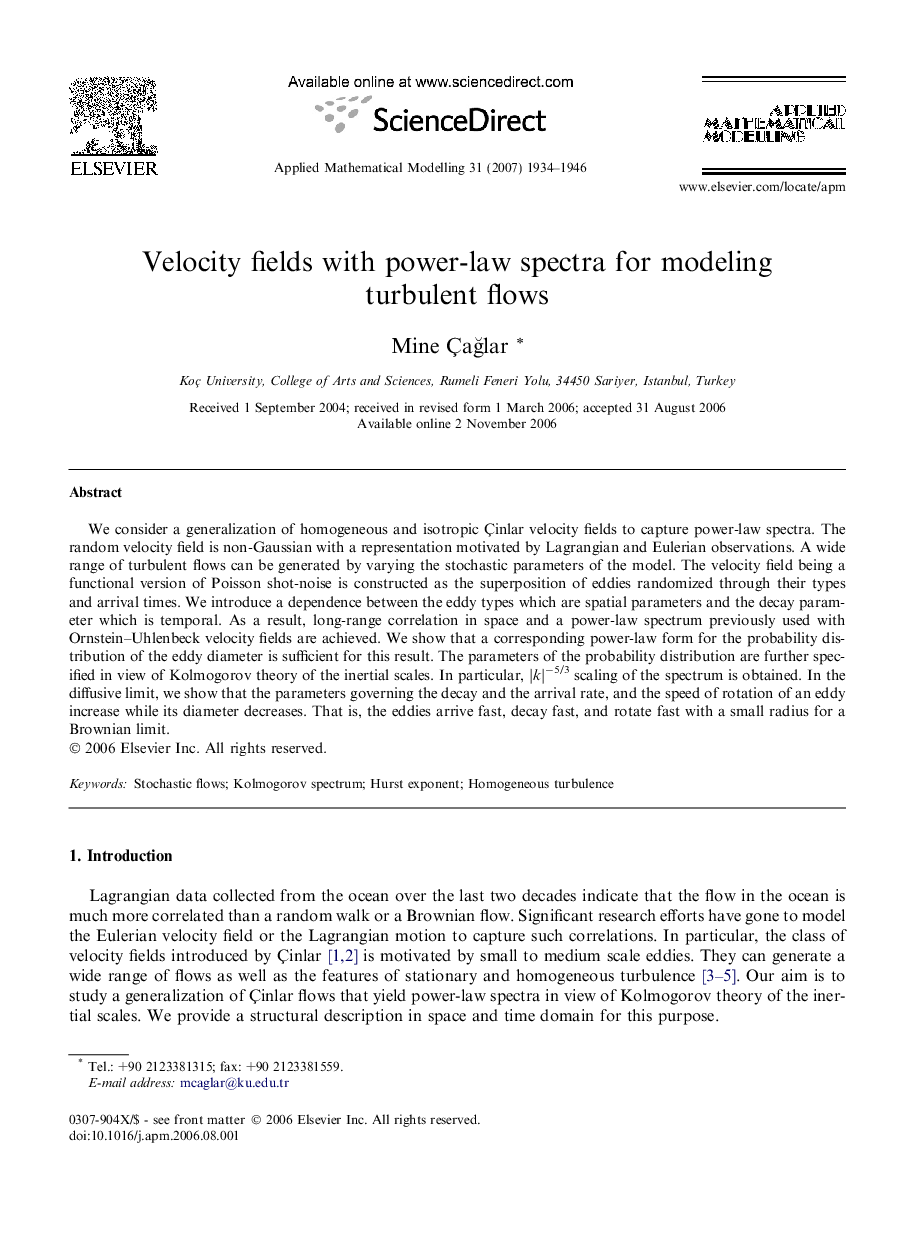| Article ID | Journal | Published Year | Pages | File Type |
|---|---|---|---|---|
| 1707066 | Applied Mathematical Modelling | 2007 | 13 Pages |
We consider a generalization of homogeneous and isotropic Çinlar velocity fields to capture power-law spectra. The random velocity field is non-Gaussian with a representation motivated by Lagrangian and Eulerian observations. A wide range of turbulent flows can be generated by varying the stochastic parameters of the model. The velocity field being a functional version of Poisson shot-noise is constructed as the superposition of eddies randomized through their types and arrival times. We introduce a dependence between the eddy types which are spatial parameters and the decay parameter which is temporal. As a result, long-range correlation in space and a power-law spectrum previously used with Ornstein–Uhlenbeck velocity fields are achieved. We show that a corresponding power-law form for the probability distribution of the eddy diameter is sufficient for this result. The parameters of the probability distribution are further specified in view of Kolmogorov theory of the inertial scales. In particular, ∣k∣−5/3 scaling of the spectrum is obtained. In the diffusive limit, we show that the parameters governing the decay and the arrival rate, and the speed of rotation of an eddy increase while its diameter decreases. That is, the eddies arrive fast, decay fast, and rotate fast with a small radius for a Brownian limit.
